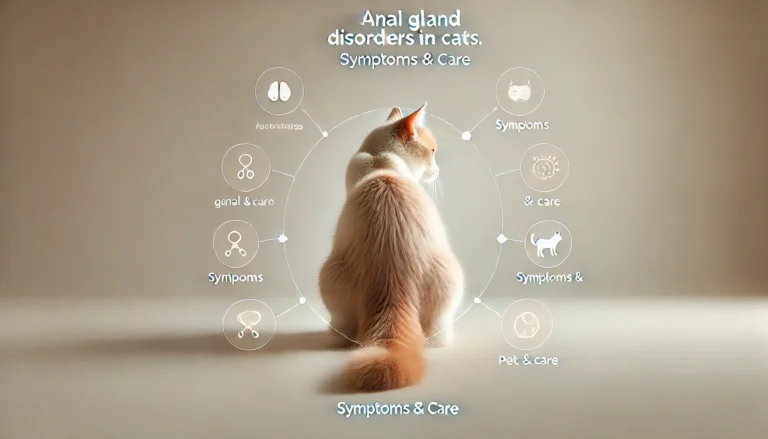Understanding Feline Hyperesthesia Syndrome (Twitchy Cat Syndrome)

Introduction to Feline Hyperesthesia Syndrome
Feline Hyperesthesia Syndrome (FHS), often referred to as Twitchy Cat Syndrome or Rolling Skin Syndrome, is a complex and somewhat rare condition observed in cats. This disorder is characterized by episodes of extreme hyperactivity, sensitivity, and erratic behavior, which can be concerning for both the cat and its owner. Delving into the details of this mysterious condition helps us better understand its signs, potential causes, treatments, and ways to support a cat experiencing these symptoms.
What is Feline Hyperesthesia Syndrome?
Feline Hyperesthesia Syndrome manifests as abrupt, exaggerated behaviors and physical reactions. The term “hyperesthesia” refers to an increased sensitivity to sensory stimuli, which in cats can include noticeable skin twitching or rippling, especially along the back. Cats with this syndrome may also exhibit behaviors such as frantic grooming, vocalizations out of character, and sudden aggressive movements.
Signs and Symptoms of FHS
The symptoms of FHS can vary but typically include:
- Skin Twitching: Owners might notice their cat’s back or tail twitching, with muscles spasming or rippling visibly.
- Excessive Grooming: Cats may lick or chew their fur compulsively, particularly along the back, tail, and flanks, sometimes causing baldness or sores.
- Erratic Behavior: Episodes of hyperactivity, such as darting around the house for no clear reason, are common.
- Vocalizations: Cats might exhibit unusual howling or meowing, which can sound distressed.
- Sensitivity to Touch: There may be a sharp reaction to touch, particularly along the spine or near the tail.

Causes of Feline Hyperesthesia Syndrome
The exact cause of FHS remains unknown, but it is believed to involve multiple factors:
- Neurological Issues: It could be related to abnormal brain activity or malfunctioning receptors.
- Genetic Factors: Certain breeds like Siamese, Burmese, and Abyssinians seem more prone to FHS, suggesting a genetic link.
- Environmental Stressors: Stress and anxiety can trigger or worsen symptoms.
- Physical Health: Underlying issues such as flea allergies or spinal problems may also play a role.
Diagnosing FHS in Cats
Diagnosing FHS involves ruling out other conditions that could cause similar symptoms. This typically includes:
- Blood Tests: To assess overall health and exclude other diseases.
- Skin Examinations: To check for parasites or dermatological conditions.
- Neurological Evaluations: To rule out neurological disorders, ensuring no other causes for the twitching or sensitivity.
Treatment and Management of FHS
While there is no cure for FHS, symptoms can often be managed effectively with a combination of approaches:
- Medications: Anti-anxiety drugs, anticonvulsants, or antidepressants may be used to help control episodes.
- Dietary Changes: High-protein and low-carbohydrate diets have sometimes been beneficial.
- Environmental Enrichment: Reducing stress through changes in the environment, such as providing safe hiding spots and engaging toys, can help.
- Behavioral Modification: Working with a feline behaviorist can provide strategies to reduce episodes.
Living with a Cat with Feline Hyperesthesia Syndrome
Supporting a cat with FHS requires patience and an understanding of their condition:
- Monitor and Minimize Stress: Keeping a calm and stable home environment is crucial.
- Gentle Handling: Avoid overstimulating your cat and be mindful of their sensitivity to touch.
- Consistent Routine: Regular feeding, play, and rest times can help minimize stress and anxiety.
do you know
Yellow Liquid Explore the basics of why cats vomit, focusing specifically on the significance of yellow liquid, which is often bile, and when it can be a sign of concern.
Conclusion of Feline Hyperesthesia Syndrome
Feline Hyperesthesia Syndrome can be a challenging condition for both cats and their owners. By understanding the signs, seeking appropriate veterinary care, and making suitable adjustments at home, owners can significantly improve the quality of life for their cats. Recognizing and responding to the symptoms early can help manage this puzzling condition effectively, ensuring your cat remains comfortable and loved.
Frequently Asked Questions
- Addressing Common Queries About FHS
- Direct answers to frequent concerns such as “Is it normal for cats to twitch in their sleep?” or “Why is my cat frantically licking himself?”
- Clear explanations for complex questions like “What does it mean when a cat rolls over?” or interpreting behaviors linked to FHS symptoms.
What can trigger feline hyperesthesia?
Triggers can include touch along the spine, stress, loud noises, and changes in the environment.
What is the cause of hyperesthesia?
The exact cause is unknown, but it may involve neurological, genetic, or environmental factors.
How long do cats live with feline hyperesthesia?
Cats with FHS can live normal lifespans with proper management of the condition.
How to treat hyperesthesia in cats naturally?
Natural treatments include stress reduction, environmental enrichment, and dietary adjustments.
How do you fix hyperesthesia?
Treatment often involves a combination of medication, environmental management, and sometimes behavioral therapy.
How do you fix nerve damage in cats?
Treatment may include medications, physical therapy, and supportive care, depending on severity.
How long does nerve damage take to heal in cats?
Recovery time can vary, typically ranging from weeks to several months, depending on the extent of the damage.
Can nerve damage repair itself?
Some nerve damages can heal over time with proper care, although severe cases might not fully recover.
How can I treat my cat’s paralysis at home?
Home care for a paralyzed cat should include a comfortable resting area, regular cleaning to prevent sores, and consultation with a veterinarian for specific treatment and physical therapy options.






